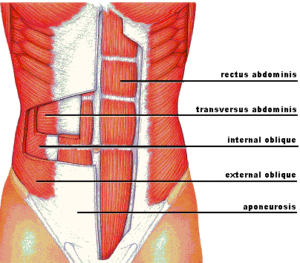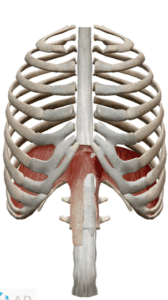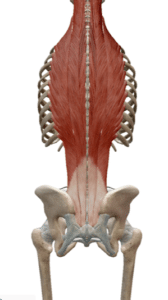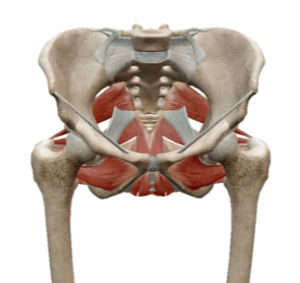What is the Core?
What is the “CORE”?
The “core” receives a lot of publicity in today’s society and fitness world. However, there is a lot of confusion about what the term “core” really means. Despite popular belief, having strong and stable core muscles goes beyond having six pack abs. It is possible to have a visible six pack, and still fail tests that measure core strength and stability.
So what really makes up the core?
The term “core” implies deep and central. Therefore, the core is made up of all of the muscles that support the deepest and most central part of the body – the spinal column. The core can be thought of as a three dimensional cylinder. We have the front abdominal wall, the top diaphragm, the back erector spinae, multifidi, quadratus lumborum, and deep gluteals, and the bottom pelvic floor. These core muscles work simultaneously to strengthen and stabilize the spine. When one part of the cylinder is compromised, core stability deficits become prevalent and the risk for injury increases. At Symmetry Physical Therapy, we perform assessments that analyze the strength and function of the core. We can assess both the individual parts of the core, as well as the system as a whole to determine which areas need improvement.
What are the three layers of abdominals?
The abdominal wall is comprised of three layers of abdominal musculature. The outermost layer is the rectus abdominus – the“six pack” muscle. When this muscle contracts, it draws your rib-cage towards your pelvis. This muscle looks nice and receives a lot of attention, however, it does not provide much in terms of core stability. The middle layer includes the internal and external obliques. This layer helps to provide lateral and rotational stability. The deepest layer is the transverse abdominus. This muscle wraps around like a corset and attaches to fibers that stabilize the lumbar spine. When this muscle is weak or inactive, the risk of developing low back pain increases.

Core muscles
The diaphragm is the top of the core cylinder
The superior wall is formed by the diaphragm. This muscle is located at the bottom of the rib-cage and plays a vital roll in respiration. The diaphragm helps to control intra-abdominal pressure and provides stability for the lumbar spine. The diaphragm also controls rib-cage expansion and contributes to thoracic mobility.

Ribcage
Which muscles make up the back of the core cylinder?
Several key muscles form the back of the core. The erector spinae run vertically along each side of the spine and control spinal extension. The multifidi are intrinsic muscles of the deep back that work to stabilize the vertebrae during local movements of the vertebral column. These muscles are often inhibited in people who experience low back pain. The quadratus lumborum connects the iliac crest to the 12th rib and is a major stabilizer of the lumbar spine. Lastly, the gluteals are made up of three layers that work together to stabilize the hips and lumbar spine.

Don’t forget the Pelvic Floor!
The pelvic floor is comprised of a group of muscles that work together to create the inferior portion of the core. These muscles support our pelvic organs and stabilize against the forces of gravity and intra-abdominal pressure. The pelvic floor also plays a special role in controlling movement of the sacroiliac and hip joints.

Core Stability Test
Now that we know what the “core” really means, let’s do a test from the Functional Movement Screen (FMS) to determine how well it is functioning. The reliability of the FMS is backed by research and frequently used with sports teams for injury prevention and performance enhancement.
Trunk Stability Push Up
This test assesses trunk stability in the right and left plane of movement, while a symmetrical upper extremity motion is performed.
Set up:
- Lie face down on the floor with knees straight and toes extended
- Men: palms on floor with thumbs in line with forehead
- Women: palms on floor with thumbs in line with chin
- Press off the floor to perform a push up
- The body should lift as a unit, watch for sagging at the lumbar spine and segmental movement
- If unable to perform with initial set up, lower palms to thumbs at chin for men and thumbs at shoulders for women, and try again
Scoring
- 3: perform pattern as directed
- 2: perform pattern with compensation/imperfection
- 1: unable to perform
- 0: pain with pattern regardless of quality
Conclusion
Are you dealing with body aches related to activity or exercise? We are here to help! At Symmetry, we will provide you with a comprehensive physical therapy assessment to get to the root cause of your problem. Check out our Youtube channel for more tips and easy to follow exercises videos. Making key changes to your footwear and movement strategies can help prevent a small problem from getting worse.
More Blogs
- Évaluation approfondie de FatPirate
- So prägen Wahrscheinlichkeiten Ihr Erlebnis im Wunderino Casino
- Casino Belgium par ROCOLUC NV : probabilités et jeux accrédités en Belgique
- Les Fondamentaux Étendus des Probabilités Expliqués pour les Utilisateurs de Casinozer : Améliorez Votre Expérience de Jeu Grâce à des Insights Mathématiques et SEO
- Erfolge durch Chancen im PlayJango Casino steigern
